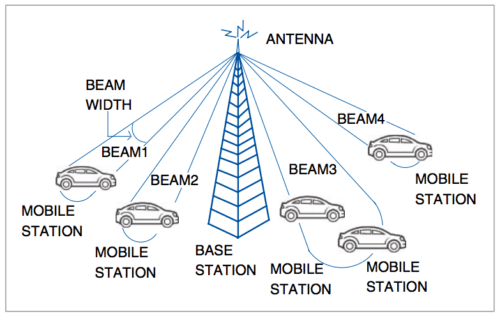Beam-division multiple-access (BDMA) scheme has been proposed to increase wireless communication system capacity and handle a large number of users in 5th Generation (5G) systems.
The number of mobile users is swelling day by day and is expected to grow ten times by the year 2020. Currently, techniques like timedivision multiple-access (TDMA) and frequencydivision multiple-access (FDMA) are adopted in communication systems. But the frequency and time division among multiple users face problems due to the increasing number of mobile users.
In FDMA, frequencies are allocated permanently and hence spectrum will be wasted when stations are not transmitting or receiving. And in TDMA, Multipath interference affects call quality. Switching from one base station cell to the other cell results into dropped calls [1].
Korean engineers have suggested BDMA as a radio interface for 5G systems as it is independent of frequency and time resources. This technique not only solves the problem of bandwidth capacity and efficiency but also eliminates signal deterioration at the cell edge.
In BDMA technology, the base station allocates separate antenna beam to each mobile phone or mobile station. This could be done after evaluating position of the mobile stations as well as their moving speeds, then deciding widths and directions of beams for mobile stations with respect to the base station. All the mobile stations communicate with base station when these are in its line-of-sight (LoS) and all the beams are distinct for each individual station. So simultaneous data transmission is possible to different mobile stations at different angles.

Figure above showing Beam-division-multiple access (BDMA) technology
To support more number of users, the beam should be divided. Mobile stations located at similar angles can share one beam to communicate with the base station using TDMA.
This scheme significantly reduces the overhead of channel estimation, as well as, the processing complexity at transceivers [2].







